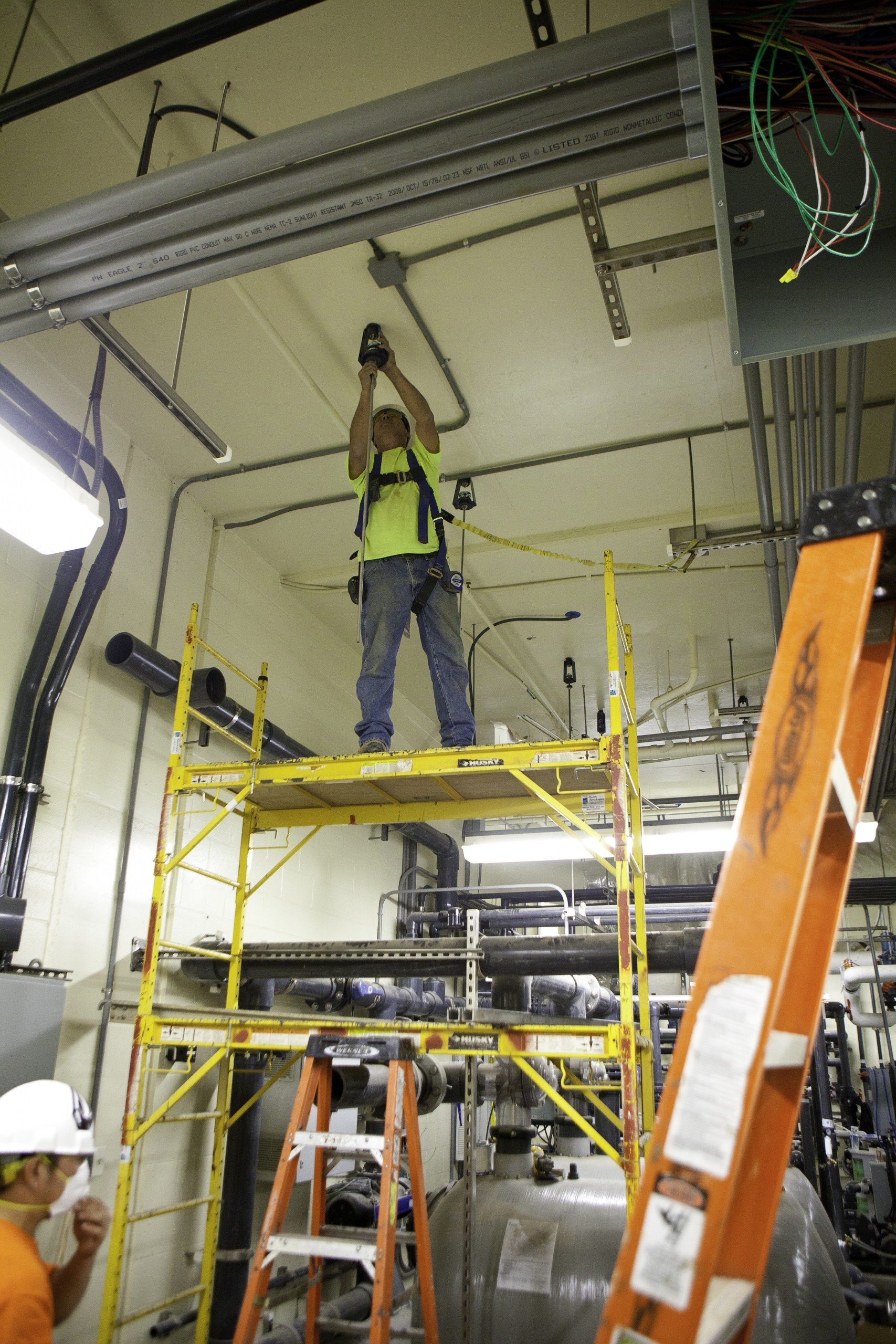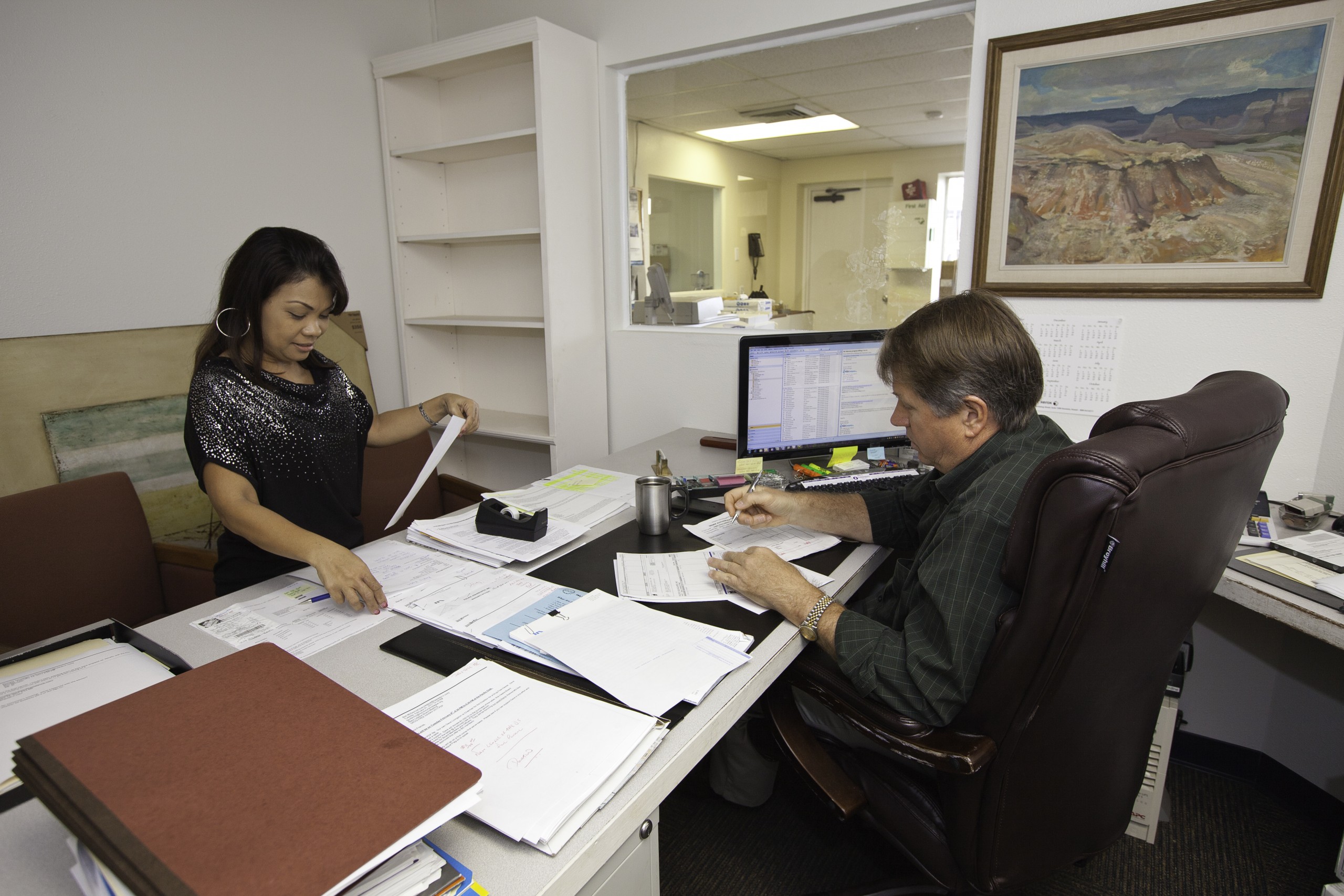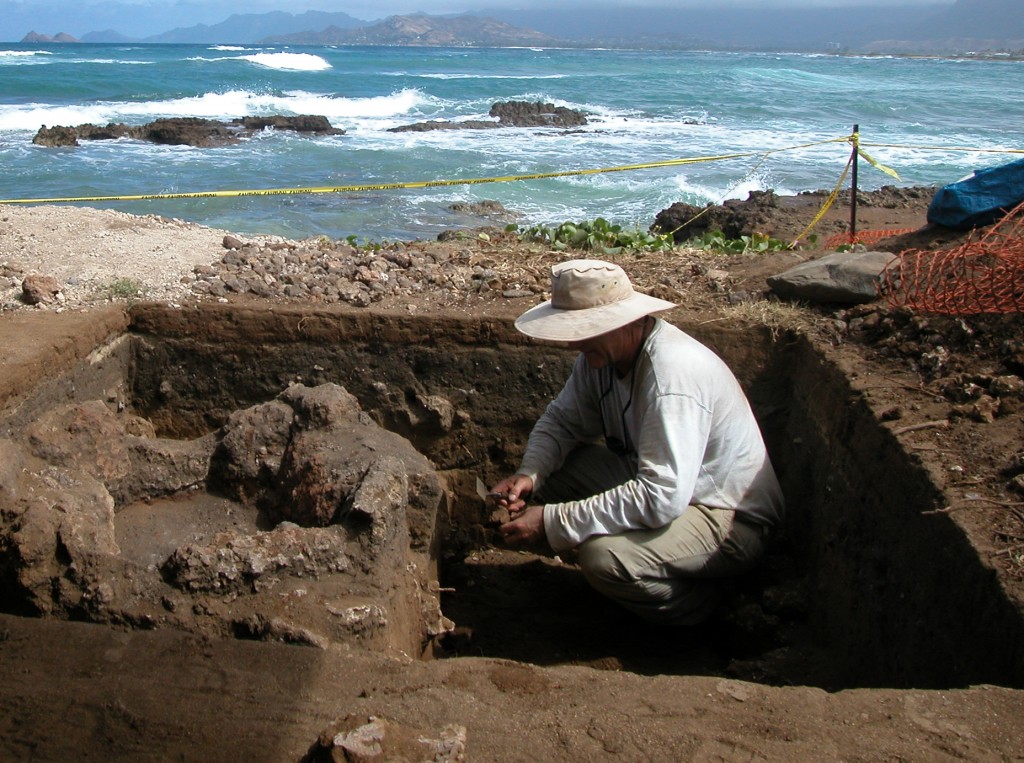Owned and Operated by Our Employees

Don Morrison Can readily list the equipment and vehicles his Kapolei company purchased in recent years.
Morrison, CFO of Pacific AquaScapes Inc., says money was available for the acquisitions because of the company’s Employee Stock Ownership Plan, which shields the company from federal and state income taxes. It allows the company to reinvest more of its profits.
“That makes the ESOP attractive,” says Morrison, who says the purchases helped give the company a leg up on other designers and builders of water features for resorts and high-end homes.
Indeed, dozens of small businesses in Hawaii say their ESOPs and other forms of employee ownership help lower taxes and increase employee motivation. They acknowledge that set-up costs and paperwork can be a burden, but insist that, overall, employee ownership is a bonus for their operations.
“It certainly provides superior motivation if you own a piece of the rock,” says Rick Holasek, president and CEO of NovaSol, a high-technology and research company that began as an ESOP in 1998 and later converted to straight employee ownership.
“We had some real tough times in the beginning. People went to great lengths to prevent the company from failing.”
No one knows exactly how many companies have ESOP or employee ownership in the state, but some people estimate there are 75 or more ESOPs, many of which are small businesses. That’s a healthy number, given the size of the state, says Greg Hansen, an attorney at Case Lombardi and Pettit, who advises on ESOPs. (Among the handful of other Honolulu attorneys who provide similar expertise are Carlsmith Ball’s John Khil and Harry Oda.)
Many of the local employee-owned companies are in the construction business – such as Allied Builders System and Shioi Construction – but others are in a variety of industries and include DTRIC Insurance, Jeans Warehouse, Chart Rehabilitation of Hawaii, Aqua Hotels & Resorts,Roberts Hawaii, Maui Divers andHPM Building Supply.
“Hawaii’s percentage of ESOPs on a per-capita basis is really quite high,” says Hansen, but he adds that such plans aren’t for everyone.
He notes there are no legal rules limiting the size of ESOPs, just practical ones. There are costs for the attorneys who usually quarterback the process, independent appraisals and third-party administrators. There also can be consultants who draw up the plans.
Each deal is different, but, in general, an appraisal can cost $10,000 or more, while attorney’s fees for set-up may range from $25,000 to $40,000.
The federal Employee Retirement Income Security Act, which governs ESOPs, also requires an annual appraisal that is part of the plan’s continuing costs. Most companies hire an administrator to handle all of the paperwork – there are reports to be sent to each participant annually, vesting schedules to be maintained, tracking of tax laws and other chores that are best handled by someone who specializes in them. The appraisal and administration costs can easily run $20,000 or more a year.
Because of this, Hansen says, the smallest companies he sees usually have 15 to 25 employees and an ESOP transaction size of not less than $1 million, but preferably $2 million to $3 million.
“Having said that, I’ve got one client in Alaska that is an engineering firm with five employees,” he says.
The national ESOP Association says roughly half of ESOPs in America are set up as part of an exit strategy for owners looking to sell. About a quarter are initiated as an additional employee benefit and others seek them because they see employee ownership as an attractive model.
To a lesser extent, ESOPs are set up to finance expansion, spin off divisions or take a company private. In some instances, employees band together to buy an operation that otherwise would close.
“Basically, if you’re a sole owner and you want to have a succession plan, this is the best plan to go with,” says Wayne Wong, CFO of Geolabs Inc., Hawaii’s largest independent geotechnical consulting firm.
Not every business owner can find a buyer and, even if successful, may face business broker fees that can run as high as 10 percent.
Other owners turn to ESOPs when they find their children are uninterested in running the business. Selling out via an IPO really isn’t an option for most Hawaii companies.
Moreover, the owner may enjoy capital-gains tax benefits, depending on the size of the ESOP. If the sale is to an ESOP holding at least 30 percent of the company’s shares after the transaction, the tax can be deferred if the proceeds are rolled over into a qualified investment.
If 100 percent of the stock is sold to an S corporation – a corporate structure under which companies pass income, losses, deductions and credit through to their shareholders – the company can escape paying federal and state income taxes.
Hansen last year set up an ESOP for an engineering company that saved it roughly $1.5 million a year in taxes. That compares to the $80,000 to $100,000 it cost to set up the plan. Moreover, the fees were less than if a big California firm had done the work.
 “It’s the old conundrum of living in Hawaii – it costs you more (to live here) and you get paid less,” says Hansen.
“It’s the old conundrum of living in Hawaii – it costs you more (to live here) and you get paid less,” says Hansen.
There are also tax deductions for companies making annual contributions to an ESOP plan.
“I think we have an edge from that perspective,” says Wong, who explains that Geolabs has plowed some of its tax savings back into the business, buying more sophisticated equipment that allows workers to become more productive.
Geolabs’ ESOP was set up in 1991 and now covers the company’s 63 employees. The workers must stay at the company six years before they’re fully vested.
Pacific Aquascapes set up its ESOP in 2003 as the owner looked for an exit strategy and the employees pushed for a plan. The ESOP covers nonunion workers, since the firm’s unionized employees already had a retirement plan.
“It just worked for both sides,” says Pacific Aquascapes’ Morrison. “There’s a million ways of doing it. You just need a good attorney and a willing set of buyers and sellers.”
The ESOP has paid off in a number of ways: Morrison says ESOP participants are more mindful of expenses and how to increase revenue. “There’s no question in my mind,” he says.
Good for startups
It also can help when a startup expects little or no income for the first few years. At Novasol, a dozen engineers and other people formed the company, hoping to eventually build a solid business involving research, engineering development and products for optical systems.
Today, the company maintains offices in Honolulu and San Diego, and has 29 employees. There were some problems involving a dispute over how the company bought back ESOP shares, but that’s behind the firm.
Not all stock-ownership plans are an instant success. Doug Hazelwood, president of Pacific Consulting Services Inc., set up a plan whereby the firm’s 10 employees could buy company stock. He was looking for a potential exit strategy and wanted to align worker interests with the company’s to create a collaborative work culture.
Since the plan was established in 2003, only Hazelwood and one other employee own shares in the archaeological and environmental consulting-services firm.
The company didn’t turn a profit for its first five years, reducing the attractiveness of ownership. Hazelwood also thinks the industry’s low pay means workers have little cash to invest.
“I think it’s going to be more attractive to employees as time goes by,” says Hazelwood, who researched the plan on his own before taking it to an attorney.
Pacific Consulting’s experience is part of a larger discussion on how much employee motivation is generated through ownership plans. Many people say instilling ESOP mentality – getting employees to think like owners concerned about expenses and serving customers – is a difficult and ongoing process.
At Shioi Construction, President Conrad Murashige says he had to work years to get ESOP members to be more vocal about suggesting improvements.
That included bringing in speakers to help get the message across, he says. Overall, Murashige recommends hiring seasoned experts when setting up and operating an ESOP.
“Make sure you have good professionals advise you,” he explains. That includes having them conduct sessions with your company’s ESOP administrative committees to make sure they understand all the reporting requirements and other aspects of the plans.
But, he says, all of the work getting people to adopt an ownership mentality has paid off.
“I had a secretary scolding a superintendent about why he didn’t turn in a piece of equipment before the rental ran over it,” says Murashige. “That never happened before.”
Getting employees to care
 Younger participants may not care as much as older participants nearing retirement, so ESOP companies may need to communicate with them more often. ESOP veterans also say the staff needs to be reassured when the share price drops because of a recession or for another reason.
Younger participants may not care as much as older participants nearing retirement, so ESOP companies may need to communicate with them more often. ESOP veterans also say the staff needs to be reassured when the share price drops because of a recession or for another reason.
Geolabs’ Wong says his company diligently communicated the value of its ESOP during the plan’s early years, when the company was working hard to pay off the loan used to purchase ownership.
Most ESOPs initially use loans to buy ownership in the company, but Hansen says some service companies may have difficulty getting loans because they lack the hard assets for collateral.
But he says probably more than half of the ESOPs he works on involve owners providing seller financing.
“Why go to the bank and pay all these fees, because, a lot of times, when the bank lends the money to do the ESOP, it turns around and makes the seller guarantee it,” he says.
A deal he did last year involved seven owners selling an engineering services firm with modest equipment. It would have been difficult to get a $15 million loan for the transaction, but, instead, the owners wound up taking a 10-year note at 7 percent interest.
“They’re happy as clams,” says Hansen, noting the former owners do carry some risk and will receive nothing if the company goes under.
Drawbacks for employees
The same goes for ESOP participants when their company files for bankruptcy. United Airlines’ ESOP is one such cautionary tale: It started with employees giving salary concessions in return for an ESOP that owned most of the air carrier’s shares.
However, the airline foundered after the September 2001 terrorist attacks and went bankrupt, wiping out the ESOP shares. That has driven some criticism of ESOPs, but others say the ESOPs in those cases worked and that it was the company’s own financial woes and operations in a difficult industry that drove it under.
There are, of course, other downsides to ESOPs beyond the expense of setting them up and maintaining them. While many companies choose to hire an administrator to do the paperwork, others who try to do it on their own find themselves facing a mountain of paperwork and needing to keep up with tax legislation.
“Almost every year there’s a new tax law that has an effect on ESOPs,” says Hansen. “There’s the constant threat that this too-good-to-be true tax exemption is just going to be taken away.”
But he notes the ESOP industry has a very effective lobby in Washington.
 ESOPs also sometimes run into difficulty with employees who believe they should have a bigger say in the running of the company. As shareholders, they choose the board of directors that oversees management.
ESOPs also sometimes run into difficulty with employees who believe they should have a bigger say in the running of the company. As shareholders, they choose the board of directors that oversees management.
In that respect, former owners lose some control, but, in reality, the person selected to run the company is still in charge. As one ESOP architect says, setting up such a plan doesn’t mean that everyone gets a corner office or a parking space.
Other possible issues for ESOPs involve something that’s known as repurchase liability or obligation. Over time, usually five to 10 years after an ESOP is begun, people will leave the company, triggering a repurchase of their stock.
The payments must be made at fair value – and can be made either in a lump sum distribution or over a period of years. In either case, companies have to be prepared to buy back the shares. That includes having the ability to repurchase stock from the company’s current cash flow or setting up a fund from which the money comes.
But the concept of a company having to repurchase shares that it already sold to the ESOP trust is bothersome to some business owners. Moreover, the obligation will be repeated over and over as the ESOP continues and vested employees leave the company.
Hansen notes that a successful company will have greater repurchase liability than other firms, but, because it is successful, it will have more cash to repurchase the stock.
‘supercharged company’
The benefits of an ESOP are many, he says, especially if it leads employees to think about growing and improving the company’s operations.
“You get the tax benefits and you get that employee culture on top of it,” he says. “Then you really have a supercharged company and a competitive advantage because of the tax thing.”
Pacific Aquascapes’ Morrison also sees ESOP plans as a boost.
“I think that it’s good. Is it perfect? No.”
But the ESOP has helped the company meet its motto of doing a job once and doing it right.
“We have a lot of very proud employee owners.”
Evidence that ESOPs pay off
Research by two Rutgers University professors, Douglas Kruse and Joseph Blasi, shows that companies with ESOPs tend to outperform similar companies.
The researchers determined that ESOP companies’ annual sales growth outpaced non-ESOP companies by 2.4 percent annually and that annual sales per employee also grew by 2.3 percent more.
That may sound like a small difference, but all other things being equal, it adds up over time. In a little more than three decades, the ESOP company’s revenue would be twice its competitor’s.
The professors also found that, in the recent economic downturn, companies with ESOPs had greater staying power than those without. About 70 percent of the 343 ESOP companies that Kruse and Blasi studied were still in business, but only 55 percent of comparable non-ESOP firms survived.
What’s an ESOP?
An ESOP is a type of employee retirement plan that sells all or part of company’s stock to a trust. As employees become vested (typically after five or six years on the job), they earn an ownership stake. When employees retire, leave or pass away, their stock is sold back to the company.
Tax savings
Imagine two similar corporations, each earning $1 million in profit for the year:
• A company that has converted to 100 percent ownership in an S corporation will have the entire $1 million to reinvest or pay to its shareholders;
• The other company will pay roughly 40 percent in taxes, leaving only $600,000 to reinvest or pay to shareholders.








